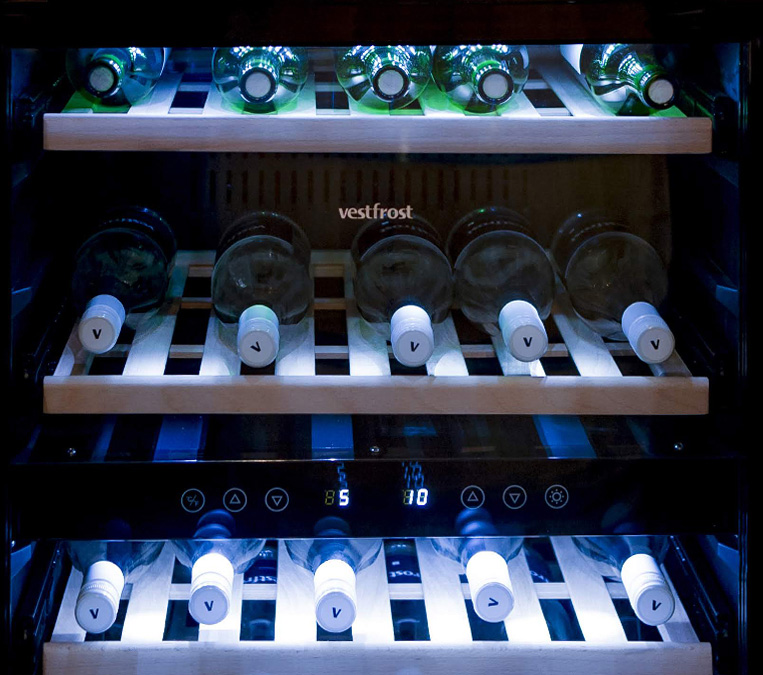
Although the content is more important than the bottle, there is no denying that packaging matters. When choosing wine, we are often strongly influenced by what we see. In addition to the graphic design of the label, we pay attention to the manner in which the bottle is closed. The majority of consumers do not associate screw caps with wine, and certainly not with good wine, as they are convinced that a decent bottle must have a cork. Is it right, though?
Advantages and disadvantages of the cork
Natural cork is made of cork oak, Quercus suber, grown on plantations in the south of Europe, mainly in Portugal. It is flexible and tight, yet lets an infinitesimal amount of air that penetrates inside the bottle, allowing the wine to mature slowly. As natural cork has been used in wine bottles for at least two hundred years, it now forms an inseparable part of the wine tasting experience – of the aesthetics and the ritual of opening the bottle with a corkscrew. Numerous associations and stereotypes arise from this conviction. However, cork can also spoil the wine, for instance, through cork taint, which adversely affects the aroma and taste of wine. Statistically speaking, it is the case of at least one bottle out of twenty. This incited winemakers to look for safer options, such as aluminium and plastic.

Alternative to natural cork
Plastic has been, and will probably remain, a popular alternative to cork, commonly used in inexpensive wines. There is also synthetic cork – most often beige, mimicking the colour of its natural counterpart. However, a growing number of bolder designers go for bright colours: the choice is virtually unlimited. Another advantage of synthetic cork is its low price. However, the material has several drawbacks: the rubber coating makes it difficult to pull out the cork when opening the bottle, and often prevents its re-use. In addition, removing the corkscrew from a synthetic cork may sometimes prove quite difficult. Glass is another solution, although rarely used due to its high production cost. Glass stoppers are attached to bottles with a rubber seal. Although they look elegant and tasteful, they are quite impractical. This is why glass is used only in some high-quality wines from Austria, Hungary and the Czech Republic, where glass is manufactured.
Advantages of ascrew cap
The Stelvin-type cap made of aluminium effectively protects the wine against cork taint and preserves its freshness. This is why winemakers tend to use it for white and rosé wines. From the practical point of view, the cap is unbeatable: you do not need any tools and opening the bottle is a matter of seconds. Contrary to what we may think, it is not a new invention: screw caps were tested as far back as the 1970s by a producer of the Swiss Chasselas wine. However, the popularity and the widespread use of the screw cap came much later, in the last decade of the 20th century, along with the dynamic growth of wine production in New Zealand and Australia. Nowadays, the screw cap is used instead of cork in the majority of bottles produced in countries with the shortest history of wine production. We may assume that consumers in these parts of the world were more willing to accept this modern solution, in contrast to Europeans, who are hugely attached to the traditional cork. In Germany, it took quite a few years before the initial opposition to the screw cap was overcome. The resistance of British consumers to wines sealed with a cap halved between 2003 and 2011.
The verdict?
The dispute remains unresolved. In this uneven cork-cap fight, let’s call it a tie. And let’s not underestimate the potential of technological development. We should consciously and without apprehension take advantage of the many benefits of a screw cap, as it does not augur an inferior quality of the drink. It is no more than the result of the producer’s decision. Despite the growing use of caps and their acceptance among customers, approx. 60% of wine bottles are closed with a cork. It remains very popular despite its higher price and the risk it presents. Given the lower amount of carbon dioxide released into the atmosphere in the production process, cork is more sustainable than plastic. It seems that, at least for now, the future of cork looks bright.
Marcin Zatorski
